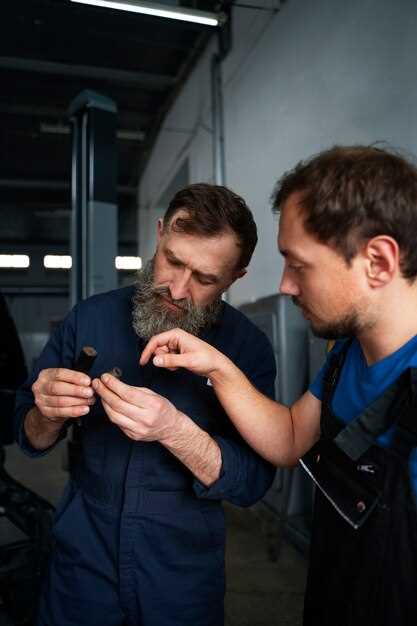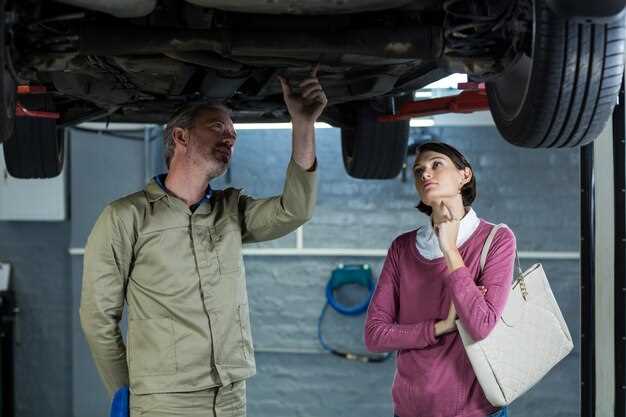
Car maintenance is an essential aspect of vehicle ownership that significantly impacts performance, safety, and longevity. When it comes to maintaining a vehicle, car owners often face the dilemma of choosing between DIY methods and professional services. Understanding the key differences between these approaches can help drivers make informed decisions about their car care.
DIY car maintenance has gained popularity among automotive enthusiasts and cost-conscious individuals alike. It allows car owners to manage routine tasks, such as oil changes, tire rotations, and brake inspections, at their convenience. DIY maintenance can be satisfying and educational, empowering owners to develop a deeper understanding of their vehicles. However, it requires a certain level of mechanical knowledge, access to appropriate tools, and a commitment to safety.
In contrast, professional car maintenance offers a higher level of expertise and comprehensive services that are often beyond the reach of the average car owner. Certified technicians possess specialized training and experience, enabling them to diagnose complex issues effectively and recommend appropriate solutions. Professional maintenance comes with the benefit of warranties and guarantees, providing peace of mind that DIY solutions may lack. However, this convenience often comes at a higher cost, which can deter some from seeking professional help regularly.
Understanding Basic Tools for DIY Car Maintenance
When embarking on DIY car maintenance, having the right tools is essential for efficiency and safety. Below are some fundamental tools that every car owner should consider having in their toolkit:
Socket Set: A comprehensive socket set is vital for a variety of tasks, from changing oil to replacing parts. Look for a set that includes both metric and standard sizes, along with a ratchet and extensions for hard-to-reach areas.
Wrenches: Wrenches are necessary for loosening or tightening bolts and nuts. A combination wrench set, which features both open-end and box-end wrenches, allows for maximal versatility.
Screwdrivers: A good selection of screwdrivers, including both Phillips and flat-head types, will assist in accessing various components of your vehicle. Consider purchasing a magnetic screwdriver set for added convenience in retrieving screws dropped in tight spaces.
Pliers: Pliers, including needle-nose and slip-joint varieties, are useful for gripping, bending, or cutting wires and other materials. They provide the leverage needed during more delicate operations.
Jack and Jack Stands: For tasks that require working under the vehicle, a high-quality floor jack and a set of jack stands are essential. These elements ensure that the car remains securely elevated while you perform maintenance tasks.
Tire Pressure Gauge: Maintaining proper tire pressure is critical for safety and fuel efficiency. A tire pressure gauge allows you to regularly check and adjust tire inflation levels, preventing premature wear and potential blowouts.
Oil Filter Wrench: Changing the oil is a common DIY task. An oil filter wrench makes it easier to remove the old oil filter, which can often be stuck and hard to reach.
Multimeter: For electrical issues, a multimeter can help diagnose faults by measuring voltage, current, and resistance. Understanding its usage can save you time when troubleshooting electrical components.
Shop Manual: While not a tool in the traditional sense, a vehicle-specific shop manual is a crucial resource. It provides detailed instructions and diagrams for maintenance and repair tasks, significantly enhancing your ability to complete projects successfully.
Acquiring these basic tools enables you to tackle a range of car maintenance tasks with confidence. Proper tool selection not only saves money but also promotes a better understanding of your vehicle’s mechanics.
Comparing Cost: DIY vs. Professional Services
When it comes to vehicle maintenance, understanding the cost implications of DIY versus professional services is essential for car owners. The upfront costs for DIY maintenance can be significantly lower, depending on the tasks at hand and the tools already available. Basic services like oil changes, tire rotations, and air filter replacements can often be performed with minimal investment, especially if one has the necessary tools at home.
However, it is crucial to consider the hidden costs associated with DIY repairs. Purchasing quality tools can require a substantial initial outlay. Additionally, if mistakes are made, they may lead to expensive repairs down the line. This can skew the overall financial advantage of opting for DIY maintenance.
On the other hand, professional services come with their own set of costs. While they may be higher initially, they often include a guarantee of quality work and the expertise of trained mechanics. Using professionals can prevent costly errors, which can ultimately save money in the long term. Furthermore, some professional services might offer bundled maintenance packages that can help spread the cost over time, making it easier for car owners to manage their budget.
In conclusion, the decision between DIY and professional car maintenance should not be based solely on immediate costs. It’s important to evaluate long-term expenses, the complexity of the tasks involved, and the potential for costly mistakes. Ultimately, each car owner must weigh their skills, the tools they possess, and the value they place on their time to determine the most cost-effective option for their vehicle maintenance needs.
Evaluating Skill Levels Required for Common Repairs
When it comes to car maintenance, understanding the skill levels required for common repairs is essential for both DIY enthusiasts and those considering professional help. Different tasks demand varying degrees of expertise, tools, and time commitment.
Basic Repairs such as oil changes, tire rotations, and air filter replacements are typically suitable for beginners. These tasks usually require minimal tools, such as wrenches and socket sets, and can be completed with step-by-step guides available in manuals or online. A basic understanding of mechanical systems is helpful, but these repairs can often be undertaken with little to no prior experience.
Moving on to Intermediate Repairs, tasks like brake pad replacements, battery swaps, or coolant flushes require a deeper understanding of automotive systems. A moderate level of mechanical aptitude is essential, as is familiarity with tools such as torque wrenches and jacks. These repairs may also involve more complicated procedures and safety precautions, making them more suitable for those who have some hands-on experience.
Advanced Repairs involve intricate systems like engine rebuilds, transmission repairs, or electrical system diagnostics. These tasks necessitate a high level of knowledge, specialized tools, and often, professional-grade software for diagnostics. To tackle such repairs effectively, individuals should have significant automotive experience, as well as a strong understanding of electronic and mechanical principles. Many of these repairs are best left to professionals unless one has extensive training in automotive repair.
In summary, evaluating the skill levels required for car repairs is crucial in determining whether to proceed as a DIY project or seek professional assistance. Starting with simpler tasks can build confidence and skills, while more complex repairs may warrant the expertise and efficiency that professionals provide.
Time Investment: DIY Projects vs. Professional Appointments
When it comes to car maintenance, the time investment can vary significantly between DIY projects and professional appointments. Understanding these differences can help car owners make informed decisions regarding their maintenance routines.
DIY projects often require a substantial time commitment. For enthusiasts who take on the maintenance themselves, time spent includes not only the actual work but also preparation and cleanup. Tasks such as oil changes, brake replacements, or detailing can take anywhere from a few hours to an entire weekend depending on the skill level and tools available.
Conversely, professional appointments are typically more organized and streamlined. Most shops are equipped to handle maintenance efficiently, allowing them to complete standard services in a fraction of the time it might take an individual. However, one must consider waiting time for appointments, which can add to the overall time investment.
| Aspect | DIY Projects | Professional Appointments |
|---|---|---|
| Preparation Time | Significant time for gathering tools and parts | Minimal; typically ready to go once scheduled |
| Execution Time | Varies widely; can take hours or a full day | Usually 1-3 hours for most services |
| Wait Time | None, as conducted at home | Potentially long, depending on service demand |
| Skill Level Impact | Higher skill level can reduce execution time | Skilled technicians reduce time effectively |
| Overall Time Investment | High, due to multiple factors | Lower, generally more efficient |
Ultimately, the choice between DIY and professional maintenance comes down to personal preference and circumstances. While DIY maintenance provides an opportunity for learning and satisfaction, professional services offer efficiency and reliability. Balancing time investment with desired outcomes is critical for making the best decision for vehicle maintenance needs.
Access to Specialized Equipment in Professional Shops

Professional car maintenance shops have access to a range of specialized equipment that significantly enhances their ability to perform detailed repairs and diagnostics. This equipment is often not available to DIY enthusiasts, which creates a direct distinction in the quality and efficiency of service.
- Diagnostic Tools: Professional shops utilize advanced diagnostic scanners that can interface with various car models. These tools can read error codes, monitor live data, and perform system checks, enabling technicians to quickly identify issues.
- Lift Systems: Car lifts provide mechanics with the ability to easily access the undercarriage of a vehicle. This access is essential for performing comprehensive inspections, repairs, and maintenance tasks, such as brake work or exhaust system repairs.
- Power Tools: Many professional workshops are equipped with pneumatic tools and electric wrenches that expedite tasks like tire changes, engine disassembly, and more. These tools save time and reduce the physical strain on technicians.
- Specialized Repair Equipment: Items such as alignment machines, tire balancers, and brake lathes are key components of professional shops. They ensure precision and accuracy during repairs that DIY setups may lack.
- Safety Gear: Professional environments often require additional safety equipment, including protective eyewear, gloves, and aprons. This equipment helps maintain a secure work atmosphere while addressing hazardous materials and procedures.
In summary, the access that professional shops have to specialized equipment enables them to offer services that are both efficient and reliable. This advantage is a significant factor in the quality of maintenance and repairs compared to what a typical DIY enthusiast can achieve with limited tools and resources.
Assessing Warranty and Liability Issues in Both Approaches
When considering DIY car maintenance versus professional servicing, understanding warranty and liability implications is crucial. Each approach carries distinct risks and protections, impacting vehicle owners differently.
In professional car maintenance, services often come with warranties that guarantee the quality of work performed. These warranties can cover parts and labor for a specified duration, providing peace of mind to the owner. If the vehicle experiences an issue shortly after service, the responsibility typically falls on the service provider, ensuring that repairs are addressed at no extra cost to the owner.
On the other hand, DIY maintenance lacks the same level of protection. When vehicle owners conduct repairs themselves, they assume full responsibility for the outcomes. Any mistake or oversight can lead to further issues, resulting in additional repair costs that won’t be covered by warranty. Additionally, if a warranty on the car is still valid, unwarranted DIY repairs may void specific coverage, as manufacturers often stipulate that qualified technicians must perform maintenance to keep the warranty intact.
Liability also varies significantly between the two approaches. In a professional setting, service providers carry insurance that protects both themselves and the customer against potential damage that can occur during servicing. This liability coverage can be crucial, especially when dealing with complex systems where errors may cause significant damage. Conversely, a DIY approach places liability entirely on the individual. If an inexperienced mechanic accidentally damages the vehicle or causes an injury during maintenance, that person is solely liable for any resulting costs.
Ultimately, the decision between DIY and professional maintenance hinges on weighing the benefits of warranties and liability protections against the potential risks involved. Vehicle owners must assess their mechanical expertise and comfort level with assuming responsibility for repairs before deciding which approach best suits their needs.














